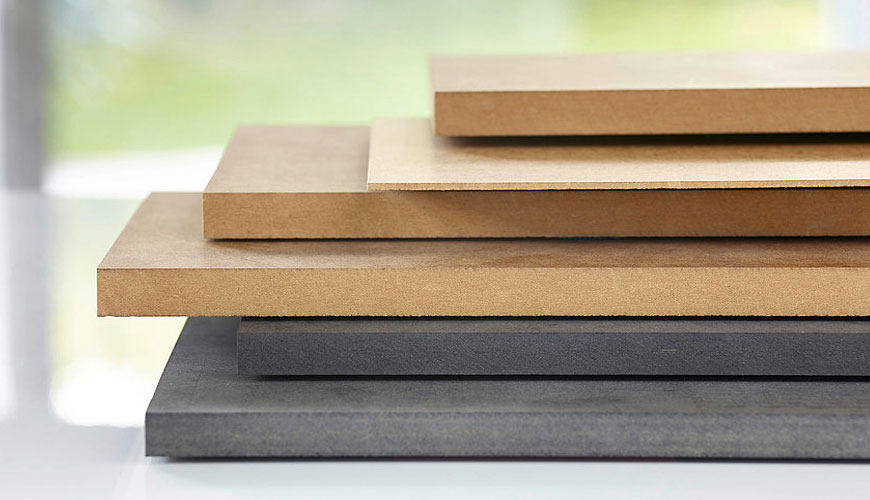

EUROLAB, with its state-of-the-art accredited laboratories and expert team, provides precise and fast testing services within the scope of EN 316 testing. This European Standard gives the definition, classification and symbols for wood fiber boards.

Wood fiber boards, also known as fiberboard or fiberboard, are composite materials made from wood fibers or other lignocellulosic materials that are shredded and compressed under high pressure and temperature.
There are several types of wood fiber board, each with their own characteristics and uses. The most common types are:
The symbols used to classify wood fiber boards vary by country or region, but generally indicate the board's thickness, density, and surface properties. For example, the European standard EN 622-5 uses the following symbols:
MDF: HDF: Particleboard:
These symbols are used to indicate the characteristics of the card and to help ensure that it is suitable for the intended application.
EUROLAB assists manufacturers with EN 316 test compliance. Our test experts, with their professional working mission and principles, provide you, our manufacturers and suppliers, the best service and controlled testing process in our laboratories. Thanks to these services, businesses receive more effective, high-performance and quality testing services and provide safe, fast and uninterrupted service to their customers.
To get an appointment, to get more detailed information or to request an evaluation, you can ask us to fill in our form and reach you.